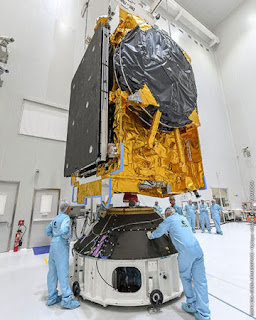NASA-ESA Sat Monitors Oceans Globally

SAT to Precisely Measure Climate Change Impact on Oceans Source: NASA & ESA Keeping a Watchful Eye on Oceans & Climate Change A new NASA and European Space Agency (ESA) satellite to precisely measure rising sea levels from climate change was launched into orbit this weekend onboard a SpaceX Falcon 9 rocket, from California. The satellite will be able to precisely measures sea levels on 90% of the world's oceans. This is the latest in a series of ocean monitoring satellites. But the technologies on this satellite are so precise they will be able to provide sea level measurements within a few centimeters. Weather Forecasting Data Assistance According to NASA, the new satellite will also help improve the accuracy of weather forecasts as it will provide new, in-...







